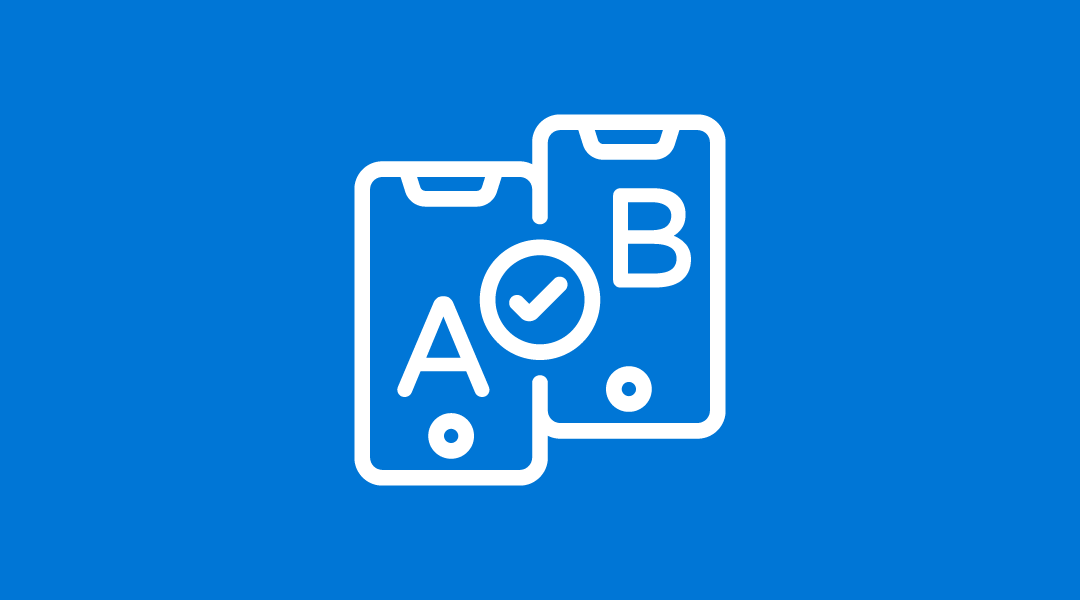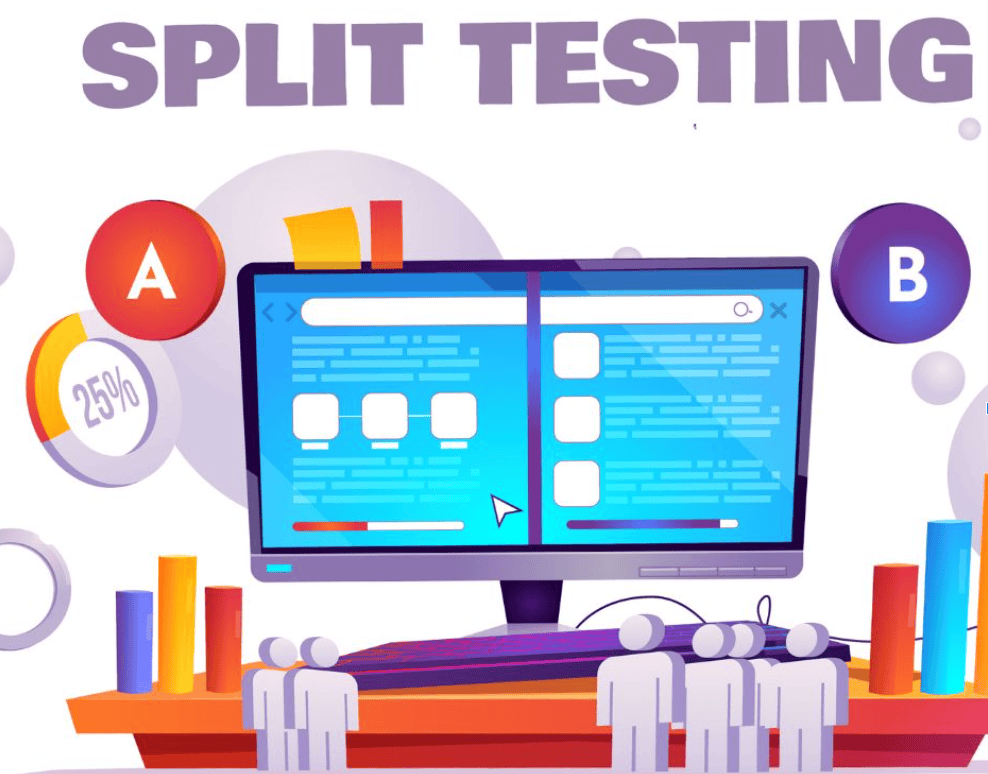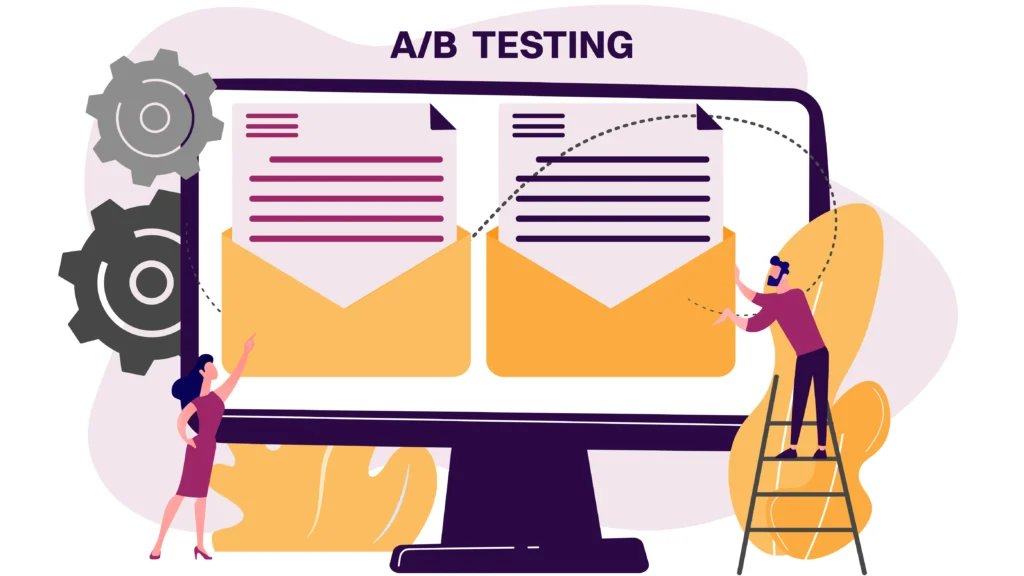Hey there! Ever feel like you’re shouting into the void with your cold outreach? Like you’re sending emails into a black hole where responses fear to tread? We’ve all been there!
But what if I told you there’s a secret weapon to break through the noise, ignite engagement, and rake in those sweet, sweet leads?
Enter the mighty A/B test. This isn’t just some marketing jargon—it’s your ticket to data-driven dominance in the cold outreach game. Think of it as your personal lab, where you experiment with different elements of your emails to see what truly resonates with your audience.
In this post, we’re going beyond the basics to explore advanced A/B testing strategies that will help you transform your cold outreach from meh to magnificent.
Ready to unleash your inner outreach scientist? Let’s dive in!

Deconstructing the Magic: Understanding A/B Testing in Cold Email Outreach
A/B testing is like having a superpower that lets you peek into your audience’s minds. It’s all about comparing different versions of your email elements—subject lines, content, calls to action, and even sending times—to uncover the winning formula that drives the best results.
Why is A/B testing the MVP of cold outreach?
- Ditch the guesswork: Say goodbye to gut feelings and hello to data-backed decisions! A/B testing lets you confidently pinpoint what works best for your specific audience.
- Maximize your impact: Imagine fine-tuning every aspect of your outreach to skyrocket open rates, clicks, and conversions. That’s the power of A/B testing!
- Become an audience whisperer. By analyzing the results of your tests, you gain priceless insights into your audience’s preferences and behaviors.
How A/B Testing Works:
- Identify your testing goal: What do you want to improve? Open rates? Click-throughs? Replies?
- Choose an element to test: Subject line, email body, CTA, sending time—pick one to start!
- Create two variations: Tweak the chosen element to create two slightly different versions (A and B).
- Split your audience: Divide your email list into two groups and send version A to one and version B to the other.
- Analyze the results: See which version performed better based on your chosen goal metric.
- Declare a winner! The version with the better performance wins!
Subject Lines That Sizzle: A/B Testing to Ignite Open Rates
We all know the feeling: a crammed inbox, a split second to grab attention, and then… poof—another unopened email.
Your subject line is your first impression, your chance to convince prospects to click “open” and not “delete.”
A/B Testing Strategies for Subject Lines:
- Short and sweet vs. long and descriptive: Do your prospects prefer concise subject lines or those that give more context?
- Questions vs. statements: Does a question pique their curiosity or does a strong statement grab their attention?
- Personalized vs. generic: Does including their name or company make a difference?
- Urgency vs. benefit-driven: Do they respond better to a sense of urgency or a clear benefit statement?
- Emojis vs. no emojis: Can a well-placed emoji make your subject line stand out (without looking spammy)?
Pro Tip: A/B testing your intro lines (the first few sentences of your email) can also significantly impact open rates! Try different greetings, humor, or a personalized touch to see what works best.

Email Body That Captivates: A/B Testing to Spark Engagement
You got them to open the email—high five! Now, how do you keep their attention and compel them to take action?
Your email body content is where you weave your magic—tell a compelling story, showcase your value, and build a connection.
A/B Testing Strategies for Email Body Content:
- Length and structure: Is a concise email better, or do your prospects prefer a more detailed approach?
- Tone and style: Do they respond to a formal tone or a more casual and friendly approach?
- Storytelling vs. direct pitch: Does a captivating story resonate more than a straightforward sales pitch?
- Value proposition focus: What benefit or solution resonates most strongly with your target audience?
- Personalization level: How much personalization is too much? Test different levels of customization to find the sweet spot.
Pro Tip: Don’t forget about formatting! Test different layouts, font sizes, and use of bolding and bullet points to improve readability and highlight key information.
Calls to Action That Convert: A/B Testing to Drive Desired Outcomes
A well-crafted call to action is like a gentle nudge in the right direction, guiding your prospects towards your desired goal—scheduling a call, visiting your website, or downloading a resource.
A/B Testing Strategies for Calls to Action:
- Placement: Does a CTA at the beginning, middle, or end of the email perform best?
- Wording: Is a strong command (“Schedule a Demo Now!”) more effective than a softer invitation (“Let’s Chat!”)?
- Button vs. text link: Does a clickable button grab more attention than a simple text link?
- Urgency vs. no urgency: Does adding a sense of urgency (“Limited Time Offer!”) encourage more clicks?
Pro Tip: Make your CTA clear, concise, and relevant to the email content. Don’t confuse prospects with multiple CTAs; focus on one specific action you want them to take.
Testing Time and Beyond: Advanced Strategies to Refine Your Approach
Now that you’ve got the core elements covered, let’s explore some next-level A/B testing strategies to truly optimize your cold outreach.
1. A/B Testing Sending Time:
Timing is everything, especially in the world of overflowing inboxes. Test different sending times and days to find the sweet spot when your audience is most likely to engage.
Pro Tip: Consider your target audience’s time zone and typical workday schedule when choosing your testing times.
2. A/B Testing Email Service Providers (ESPs):
Believe it or not, the ESP you use can impact your deliverability and open rates. Test different ESPs to see if one consistently performs better for your cold outreach.
3. A/B Testing with Dynamic Landing Pages:
Take personalization to the next level by creating dynamic landing pages that tailor the content to each individual prospect. Test a regular cold email against one that directs prospects to a personalized landing page and see the difference it makes!
4. A/B Testing Follow-Up Sequences:
Don’t give up after one email! Test different follow-up sequences—the number of emails, timing, and content—to see what re-engages your prospects and keeps your message top of mind.

Decoding the Data: Analyzing Your A/B Test Results for Actionable Insights
Running A/B tests is only half the battle—the real magic lies in analyzing the results and making data-driven decisions.
Here are some key metrics to track:
- Open rate: The percentage of recipients who opened your email.
- Click-through rate (CTR): The percentage of recipients who clicked on a link in your email.
- Reply rate: The percentage of recipients who replied to your email.
- Conversion rate: The percentage of recipients who took your desired action (e.g., scheduled a call, downloaded a resource).
Pro Tip: Use a cold email platform that offers built-in A/B testing and reporting features to make analyzing your data a breeze.
Conclusion
A/B testing isn’t just a one-time task; it’s a continuous journey of optimization and improvement. By consistently testing, analyzing, and refining your approach, you can transform your cold outreach from a shot in the dark to a laser-focused strategy that consistently delivers results.
Remember, the most successful outreach campaigns are built on data, not guesswork. So embrace the power of A/B testing, get curious, and watch your leads multiply!
FAQs
How do I choose the right sample size for my A/B tests? The ideal sample size depends on your email list size and the expected difference in performance between the two variations. Generally, a larger sample size will yield more statistically significant results.
Can I test multiple elements at the same time? It’s best to focus on testing one element at a time. This way, you can clearly attribute any changes in performance to the specific element you tested.
How long should I run my A/B tests? The duration depends on your email volume and the speed at which you collect statistically significant data. Aim to run your tests for at least a week to account for any variations in daily email activity.

